(Part 2 of this interview is here…)
Genre fiction and the rise of African sci-fi; the establishment of literary networks across the continent; the status of independent publishing and bookselling, as well as the significance of DIY ethics and aesthetics in an increasingly commodified and codified world; the need to promote literacy and an engaged, active reading culture while supporting and encouraging existing and new writing talent; debates on the African novel and what makes African content – resisting the ‘single story’ that is anticipated as the one of Africa that is globally demanded, nay, actively encouraged and endorsed by the mechanics of the international prize; the value of a material product in a technology driven modernity and market – plus a whole bucket of wise-crazy in an affordable and pretty incredibly gob-smacking form..?
Besides describing some of the preoccupations of AiW, why, I hear you ask, this list? As some of you may remember me saying earlier this year, it was while I was browsing the truly fantastic and vigorous indy bookshop the Book Lounge in Cape Town in June, that I stumbled across a stack of magazines with an arresting aesthetic promising tantalising content (you need scissors or a good rip to open them) called Jungle Jim. Set up by Jenna Bass and Hannes Bernard, Jungle Jim is a forum for genre fiction from across the continent: pulp-fiction stories from all across Africa. Now run by Jenna, Hannes and Shaun Swingler, Jungle Jim is a cheap, bi-monthly showcase of the power of imaginative fiction and the possibilities of alternative vision.
Jungle Jim‘s very own Constance Myburgh was shortlisted for this year’s Caine Prize, with one of her stories that stars Jungle Jim‘s resident detective, ‘Hunter Emmanuel’. I caught up with her, and co-founder and editor of Jungle Jim, Jenna, in London during the prize’s publicity rounds. (There’s more from and on ‘genre fiction’ with extracts from Jungle Jim stories – and in part II of this Q&A. For now, part I…).
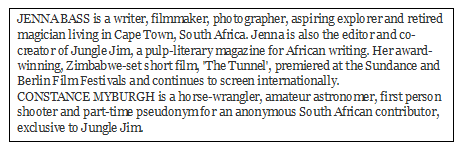 Hannes Bernard, Jenna Bass and Shaun Swingler – the team behind Jungle Jim.
Hannes Bernard, Jenna Bass and Shaun Swingler – the team behind Jungle Jim.
Katie – on behalf of Africa in Words: Maybe we could start at the very beginning – how was Jungle Jim born? What’s the inspiration behind the magazine?
Jenna Bass -for Jungle Jim: Hannes (Bernard) and I were sharing an office – he as a designer and me trying to get a film made – and both of us were getting frustrated with our respective work being dependent on clients, financiers, outside factors beyond our independent control etc. I think we’d been throwing around hints for a while that we would like to start something – different, fun – that we could do ourselves, for which we could see an actual result – and then one day we decided to start a magazine – of course, then we had to decide what was to go in this magazine! 
At the time I’d been re-reading (for the hundredth, guiltily-pleasurable time) Michael Chabon’s The Amazing Adventures of Kavalier and Clay [note from AiW – this 2000 novel won the Pulitzer in 2001] – so I had been thinking a lot about writing and pulp. Of course it’s easy to idealise that era, which in many ways could be seen as quite creatively depressing. But there were aspects to it that I felt were exciting and dare I say – helpful – for writers, at least myself. The idea of creating accessible literature, free of angst and ego (relatively), which was narrative driven and allowed writers to get back into one of the reasons they probably originally felt the desire to write – to tell stories. To exercise imaginative freedom too. Looking around, there really weren’t too many platforms for this – so, we thought – why not? That is of course the abridged version. It was a confluence of circumstances, as these things often are.
Can you describe some of the challenges of start up? Given the economics of publishing fiction in South Africa, and in a world increasingly driven by market forces, I imagine there must have been a need for a lot of love, or an enormous hole that had a Jungle Jim shape in it..?
We acknowledged right from the beginning that what we were doing made no conventional business sense – or really any kind of business sense – and coming from a film background this was quite normal to me! We decided the only way we were going to be able to keep the magazine going was if it cost no more than what we could afford to lose personally per month: and that is really where the business model ends! With hindsight, this was an even better decision than we realised, and definitely explains how we’ve managed to keep going, really blissfully ignorant in many ways to any kind of market pressure – though as we continue and try to develop, we’re starting to come into contact with these harsh realities. But yes – love comes into it, as well as some madness. And the real belief that it is a worthwhile endeavour, that there is a hole that we fill – that we provide something that wouldn’t otherwise be there – for writers and for readers.
The magazine is super-affordable – Jungle Jim sells for R15, the current equivalent of about £1!
How did you come to the decision of what to charge for it?
We wanted to take the best from the pulp tradition – and this included ensuring the magazine was not only affordable, but downright cheap. We had the noble ambition, or rather hope, that Jungle Jim’s craziness could also encourage reading, as entertainment, and if it was to do that it had to compete with everything else people could be spending their money on. Originally we wanted to make it even cheaper – and I think if we were producing on a much larger scale, and had sponsors etc we could do that. But in the end we charged the smallest amount we felt was possible in order for us to keep going – and of course taking into account store mark ups etc.
What kinds of pressures did you face, having just the two of you then, and did you anticipate them? Has this changed as the magazine developed? How many are on the team and what are their roles?
Yes, the magazine was started by Hannes and myself in 2011 (though the work properly began in 2010). 
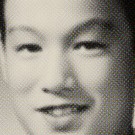 Two people was relatively sufficient at first – though not when taking into account our initial plan of hand screen-printing the magazine – that was very interesting! Hannes managed to rope in some friends to help out – but we were still running around the office just before the launch trying to get the ink to dry and assemble all the pages in the right order (at this stage we couldn’t afford staples, so there were papers everywhere at the launch. We have now graduated to staples). But as things have continued, and both of us also had other work to do, having other people involved became really essential –
Two people was relatively sufficient at first – though not when taking into account our initial plan of hand screen-printing the magazine – that was very interesting! Hannes managed to rope in some friends to help out – but we were still running around the office just before the launch trying to get the ink to dry and assemble all the pages in the right order (at this stage we couldn’t afford staples, so there were papers everywhere at the launch. We have now graduated to staples). But as things have continued, and both of us also had other work to do, having other people involved became really essential –  there were things involved in running a magazine that I – being totally ignorant when I started – had not anticipated. The first person to join the team was Shaun Swingler – who started as our first proof reader (before that it was just me with my dubious high school grammar) and who’s now our managing editor. Shaun, Hannes and I are the core team. We now also have two great copy checkers,
there were things involved in running a magazine that I – being totally ignorant when I started – had not anticipated. The first person to join the team was Shaun Swingler – who started as our first proof reader (before that it was just me with my dubious high school grammar) and who’s now our managing editor. Shaun, Hannes and I are the core team. We now also have two great copy checkers,  Robyn and
Robyn and 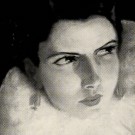 Charlotte, without whom we would be lost. Hannes designed the format of the magazine, and I do the layout. Robyn does twitter, I do facebook [www.facebook.com/junglejimmag ]. We all harass the printers. Then we have an amazing team of regular and semi-regular illustrators. Everyone is a volunteer. We’re so grateful to have the support we do.
Charlotte, without whom we would be lost. Hannes designed the format of the magazine, and I do the layout. Robyn does twitter, I do facebook [www.facebook.com/junglejimmag ]. We all harass the printers. Then we have an amazing team of regular and semi-regular illustrators. Everyone is a volunteer. We’re so grateful to have the support we do.
 The magazine has a particularly strong, individual aesthetic.
The magazine has a particularly strong, individual aesthetic.
Thank you.
Of your 15 strong team, I notice 10 are illustrators.
The illustrators are freelance – though some have practically become permanent by their continued commitment.
Can you tell us the story of its visuals and what or who lies behind it? How has this developed from its mini-mag, pre-launch days?
Originally, Hannes did all the design and illustration – he formulated the ‘look’ of the magazine, and set the overall tone which I think is, despite the DIY, zine-ness of the magazine, really impressive. After Issue 2 we started to get other illustrators involved – a special mention of the amazing Jacques Strauss who was the first to join our team and is responsible for some of our maddest illustrations (MULES OF FORTUNE serial by Samuel Kolawole, and the cover of Issue 15) – until we have got to the very fortunate point we are now where we have a number of wonderful contributors who all get what we’re doing, do great work, and yet are very different.
How did the name come about – was it before or after the concept of the mag was gestated? I note the possible multiple meanings and word puns in your naming/names carries through from the magazine itself to your own pen-name and into your Caine Prize nominated story,  ‘Hunter Emmanuel’, (Hunter Emmanuel is JJ’s in-house literary detective, penned by Bass pseudonymously as Constance Myburgh): what’s the significance of naming for you and for the mag?
‘Hunter Emmanuel’, (Hunter Emmanuel is JJ’s in-house literary detective, penned by Bass pseudonymously as Constance Myburgh): what’s the significance of naming for you and for the mag?
I love names. Though, very simply, the name Jungle Jim was the first one we could both agree on – we thought it’d be a good idea to have the word ‘Jungle’ in the title, so we threw around variations on that for about two (productive) days. We wanted a title that acknowledged the role that Africa has played in western pulp and genre writing in the past – the exotic, the other, the place where anything happens – and sort of recolonize that, if that’s possible. As everyone does, we wanted something catchy. And something that may upset a few people – it has – or inspire some kind of conversation – which it has. I can’t actually remember particular instances of people getting upset, but it is an impression that I’ve received, or I received at the very start of the magazine – which was coupled with people being suspicious of the ‘western genre’ format, and then on top of it the fact that we also had this tongue in cheek title. I can see where this is coming from, as it does connote the ‘exotic’ image of Africa – the idea that it’s ALL ‘a jungle out there’ etc. But we always meant this in a positive, self-aware way – and with a sense of pride too, of course. To locals in different parts of Africa – at the least I can speak of South Africa, much of the rest of the continent IS unknown and different. So we’re embracing the fact that we’re all finding out new things.
Can you tell me a little bit about ‘Afreak’ both in and out of this context?
Afreak Press, similarly was another tongue in cheek reference to this image of Africa, which we wanted to somehow work with – at the time we were coming up with these names, we didn’t necessarily have any answers to these concepts, or know where it was going, but we found the debate stimulating, so reasoned that couldn’t be too bad. But in general, names have a kind of defining mysticism, I take the responsibility of naming things/characters very seriously, and if I don’t get it right it bothers me hugely. The story of ‘Hunter Emmanuel‘ came about partly because I had the name, which had come into my head somehow. There was a person in that name that had to exist, so the name brought him into creation. Which is maybe often the case with more things than we realise.
How do you get your submissions?
When I started, I hadn’t a clue about African literature, even the canon, let alone who was doing what and where. Part of the reason we chose African writing as the content for the magazine was that I wanted to educate myself. So I started essentially from scratch. I did a lot of internet searching – saw who the existing publications were, asked their advice, and on the whole they were incredibly helpful and supportive – the editors of StoryTime and Something Wicked especially. I posted calls for submissions, but a lot of it was writing to individual writers, who I thought may be interested and/or sympathetic and hoping for a response. It was a tough pitch at first – unknown magazine, no track record, no pay, dubious (seemingly, to some) intentions etc. But I remain very, very appreciative for those writers who were interested and even excited about it. And it went from there. Now I hardly have to do calls for submissions. But I anxiously anticipate the day when I can pay for stories. I really, really want to do that. I realise it’s almost silly to call ourselves a pulp magazine when we don’t pay for contributions. So funding must come. Please. Hello funders.
Could you describe a typical journey of a (contributing) story into print?
The story gets sent to us – I read it – I filter out everything that is definitely not right for us – then Shaun and I both go through them and discuss. I make the final selection, but I always use his input. I make the selection based on tone, theme and nationality – trying to go for an interesting cross-section/combination/contrast per issue – unless it’s a themed issue like our recent JJ 16, which is all South African SF. Once I have the issue locked down, we proof read the stories – once in a while we’ll work with a writer if we feel the story needs another pass, but we feel strongly that we want to publish it – but we don’t really have the time/man-power to do this often. Then I match up stories with illustrators – always fun – I wait expectantly – then once everything is ready I complete the layout – inevitably make 100 little mistakes that have to be corrected over and over again (I’m not very good at layout) – and then it goes to the printers, where, barring a national shortage of red/blue ink, which happens – it is risoprinted, assembled, and most importantly – stapled!
Any thoughts on whether collecting short stories in the ways the magazine does comes with any sense of creating a kind of network – do you consciously find yourselves creating a kind of coherence, or is it more a question of collecting a kind of coherence already ‘out there’ – and how does that feel for you as editors?
I would love to think we somehow play that role (creating a network), but I think it actually may still be too early to say. As for coherence – yes, I do seek this, for the magazine as a whole, and per each individual issue. But at the same time, this is constantly being challenged by the submissions we get, and I end up having to assess each story – it’s hardly ever clear-cut. And I have to acknowledge how subjective it is too – but of course that’s the joy of independent publishing! I don’t have to answer for it.  I have a mission statement, which is public, and then the rest is intuitive. On the whole I am very proud of the scope, consistency and all-round excellence of the writing we have been able to publish – I must admit to a certain pride each time an issue comes out – and all 16 issues (where we’re up to now) have a quite powerful magic when taken together, something very modern, despite the ‘retro pulp’ comparisons – and something very African – despite the ambivalence and sometime hostility to ‘western’ genre. So I hope that means we’re doing something right.
I have a mission statement, which is public, and then the rest is intuitive. On the whole I am very proud of the scope, consistency and all-round excellence of the writing we have been able to publish – I must admit to a certain pride each time an issue comes out – and all 16 issues (where we’re up to now) have a quite powerful magic when taken together, something very modern, despite the ‘retro pulp’ comparisons – and something very African – despite the ambivalence and sometime hostility to ‘western’ genre. So I hope that means we’re doing something right.
Have you faced any particular challenges getting stories from across the continent?
Yes. Language is of course a problem – it’s difficult for me to find out about, and then contact, writers who don’t write in English circles. For example, I haven’t been able to infiltrate Francophone Africa at all, which really upsets me. Not many people seem to know this, but Jungle Jim welcomes, and actively tries to solicit, non-English writing (with an accompanying English translation, however basic) – but so far no one has taken us up on this – and it probably is because we’re only really known in English speaking circles anyway. But I do try to obtain contributions from as wide a variety of countries as I can, and I get very excited when we receive a new one, it’s always a highlight for me. We recently selected a story from Lesotho, as well as our first Egyptian piece, so I hope we’re making inroads.
I notice you’ve published extracts from already published novels, and that you publicise writers’ work who have previously appeared in Jungle Jim. How does the relationship, if any, between the magazine and other literary forms – novels, novellas – operate?

 I think the relationship is mainly practical – sometimes we contact a writer who doesn’t have any short fiction available, but they may have a novel – and of course we like to promote novels that we are excited about. For example, we’re about to feature an extract from Ahmed Khaled Towfik’s UTOPIA. Of course, we also publish serials, so novellas are an option for us, if they’re right – our next serial is a novella by Lauri Kubuitsile of Botswana – detective thriller CLAWS OF A KILLER. But we acknowledge and embrace the fact that writers write in all forms – short stories, novels, novellas – and we like to support our writers too – we rely on them, they’re excellent people, and we really want to help create a community in whatever way we can.
I think the relationship is mainly practical – sometimes we contact a writer who doesn’t have any short fiction available, but they may have a novel – and of course we like to promote novels that we are excited about. For example, we’re about to feature an extract from Ahmed Khaled Towfik’s UTOPIA. Of course, we also publish serials, so novellas are an option for us, if they’re right – our next serial is a novella by Lauri Kubuitsile of Botswana – detective thriller CLAWS OF A KILLER. But we acknowledge and embrace the fact that writers write in all forms – short stories, novels, novellas – and we like to support our writers too – we rely on them, they’re excellent people, and we really want to help create a community in whatever way we can.
How do you deal with rights on stories?
Stories can have been published before, and we’re completely non-exclusive, so writers are free to submit the piece anywhere else at any time.
Best and the worst things about publishing Jungle Jim as an independent zine publication?
Worst: Having no money to do all the things we’d like to do! We have more ideas than we know what to do with. Best: Having no one to answer to but ourselves!
Any advice for budding zine publishers and actually living the impossible dream?
I think you have to be very seriously practical. But also crazy. Think very hard about how you’ll not only start, but how you’ll keep going.
How do you get in to a Jungle Jim?
If you’re an African writer, submit a story! Alternatively everyone can draw for us! Become our friends! Spread the word! And buy the magazine! Whichever you choose, our website should have most, if not all, the answers: www.junglejim.org
To get into the magazine itself – expect the unexpected, and have a scissors handy – the mag has to be cut open at the top!
More from Jenna Bass at Jungle Jim with part 2 of this interview – featuring deep-down chat on popular, pulp and science-fiction in Africa, extra word on Jungle Jim‘s super-powered aesthetic, with an appearance from Joey Hi-fi – award-winning designer of Lauren Beukes’ Zoo City; Constance Myburgh (or is it she?!) pops in to talk Caine Prize nomination, plus we find out where, how, who and more reasons why to get more of Jungle Jim…
Read Part 2 of this interview.
Extracts from Jungle Jim (9-16) now here!
And click here for the first of our guest reviews of Jungle Jim.
Categories: Conversations with - interview, dialogue, Q&A, Reviews & Spotlights on...



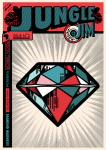
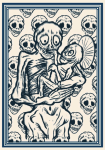
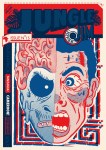
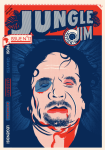
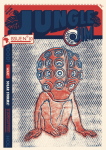

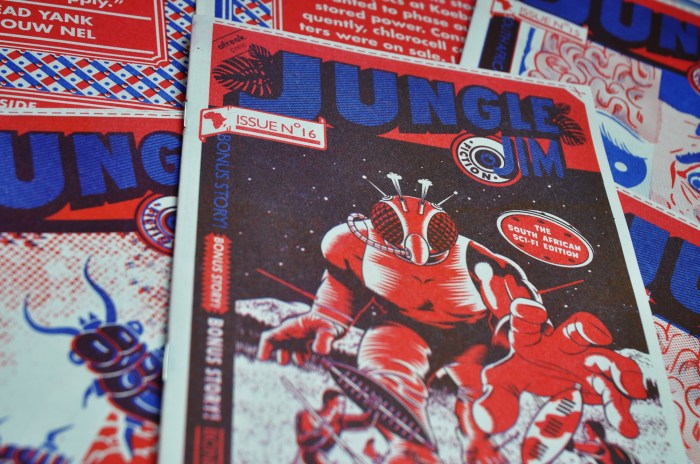
 Q&A: Spotlight Interview with Ellah Wakatama, Chair of the Caine Prize for African Writing
Q&A: Spotlight Interview with Ellah Wakatama, Chair of the Caine Prize for African Writing  Spotlight on… Editing Anthologies: Doorways, Communities, and Reference Texts
Spotlight on… Editing Anthologies: Doorways, Communities, and Reference Texts  Spotlight Q&A: Editors & Writers talk – Ucheoma Onwutuebe’s ‘Where Are You and Where Is My Money’, with Lydia Mathis
Spotlight Q&A: Editors & Writers talk – Ucheoma Onwutuebe’s ‘Where Are You and Where Is My Money’, with Lydia Mathis  Words on…Past & Present: The International Black Speculative Writing Festival (London & Remote)
Words on…Past & Present: The International Black Speculative Writing Festival (London & Remote)
Did Constance Myburgh/Jenna Bass give any indication as to why she writes pseudonymously?
Initially it was to create the impression that we had more writers involved! But as I was also quite new to publishing my own fiction, I found the pen-name helped me bypass some of the anxiety I may have felt… And it was like having another person telling me to write.
Thanks to Jungle Jim for being so todally epic! –
Check out their blog for more of their wisdom and the latest in African pulp fiction news and glory (and us!): http://www.junglejim.org/?cat=8
Dear Jenna,
this is such a beautiful interview! Thank you so much for this. And I am so happy it has 2 parts!! Jungle Jim was already amazing for me, but now, after some of your wisdom (as Katie says) my admiration just went to the roof! And I love the fact we need to have scissors to read it.
Have you ever though in distributing in Latin America? I know people who would love to get their hands in JJ. I am publishing a post about JJ in the Brazilian version of Africa in Words soon.
And thanks Katie for linking us to JJ. You are a genius!